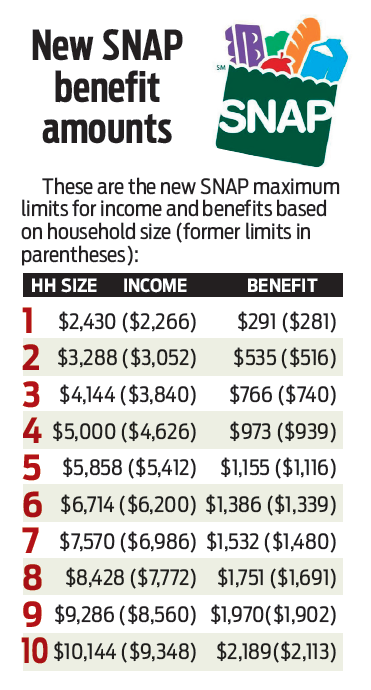Are SNAP benefits facing a freeze, and what does this mean for millions of Americans who rely on them? The answer, definitively, is no – SNAP benefits are not frozen, and should continue as usual for eligible households, as of the latest updates.
The landscape of food assistance programs in the United States is a complex one, subject to shifts in policy, funding, and administrative directives. Recent events have sparked considerable concern regarding the Supplemental Nutrition Assistance Program, commonly known as SNAP, and its potential disruption. These concerns stem from a confluence of factors, including executive orders, funding adjustments, and the ongoing administration of the program at both the federal and state levels. Understanding the intricacies of these developments is crucial for both recipients of SNAP benefits and the organizations that support them. The constant evolution of these programs requires a careful examination of the facts, and a clear understanding of the impact on individuals and communities.
A recent order from the Office of Management and Budget (OMB), issued on January 29, 2025, initially directed all federal agencies to pause their spending. This directive, while broad in scope, understandably raised questions about its potential implications for SNAP benefits, which provide vital food assistance to millions of low-income Americans. However, the subsequent rescinding of the order clarified that SNAP benefits would not be affected and should continue to be disbursed as usual. This clarification is a critical point, especially as the program continues to operate.
The SNAP program is not without its challenges. It is administered at the state and local level, with funding provided by the federal government. This decentralized structure can lead to variations in implementation and, at times, administrative complexities. Additionally, the program is subject to political and economic pressures, which can result in policy changes and adjustments to funding levels. In recent times, there has been a push towards greater efficiency, with the government aiming to streamline the process and reduce instances of fraud, while simultaneously addressing food insecurity and ensuring that those most in need receive adequate support. One key change involved a temporary halt on SNAP programs.
One of the programs that experienced temporary disruption was the SNAP Stretch Program. This initiative, which offered a significant boost to participants' benefits when used at local farmers' markets, was temporarily paused due to high demand and limited funding. While not a direct freeze on SNAP benefits, this pause underscores the dynamic nature of food assistance programs and the need for flexibility and adaptability to address evolving needs. The SNAP Stretch Program, designed to enhance the purchasing power of SNAP recipients at local farmers' markets, was a popular and effective tool for expanding access to fresh, healthy food. Unfortunately, it was temporarily halted, underscoring the need for careful planning.
The White House has also been a point of focus in the discussion. Early reports from various sources regarding potential pauses on federal grants, generated widespread alarm among organizations that serve communities. However, any potential impact on the SNAP program has been clarified. Despite these initial concerns, assurances were provided to clarify the position on SNAP benefits. The government's stance on these issues remains a dynamic and evolving factor in the broader context of the food assistance network.
The situation surrounding SNAP benefits, as with any government program, is subject to shifts and revisions. Legislative action, court rulings, and administrative decisions can all influence the program's structure, funding, and eligibility criteria. The USDA has been active, and has announced plans to keep the program operating through February 2019. But there is a need to continually monitor this dynamic situation.
In the broader context, it's crucial to consider the wider issues of food security and the fight against hunger. Food assistance programs like SNAP play a critical role in alleviating food insecurity. Ensuring the program's continued effectiveness is not only a matter of policy, but also a moral imperative. The food environment in the United States can be considered as evolving, with a constant need for vigilance. Many households rely on the assistance the program gives, and their needs must be taken into account.
It is imperative to rely on credible sources for information. The Department of Agriculture, the state agencies, and reputable news organizations are generally very good sources to get information from. These sources can provide up-to-date information on the status of SNAP benefits and related initiatives. This vigilance includes monitoring for any fraudulent activity and other important warnings regarding program administration.
The ongoing situation surrounding SNAP benefits is a reminder of the interconnectedness of government, policy, and social well-being. While the current status is one of continued operation, it is essential to stay informed and engaged in order to understand the evolving landscape of food assistance and its impact on the lives of millions.

